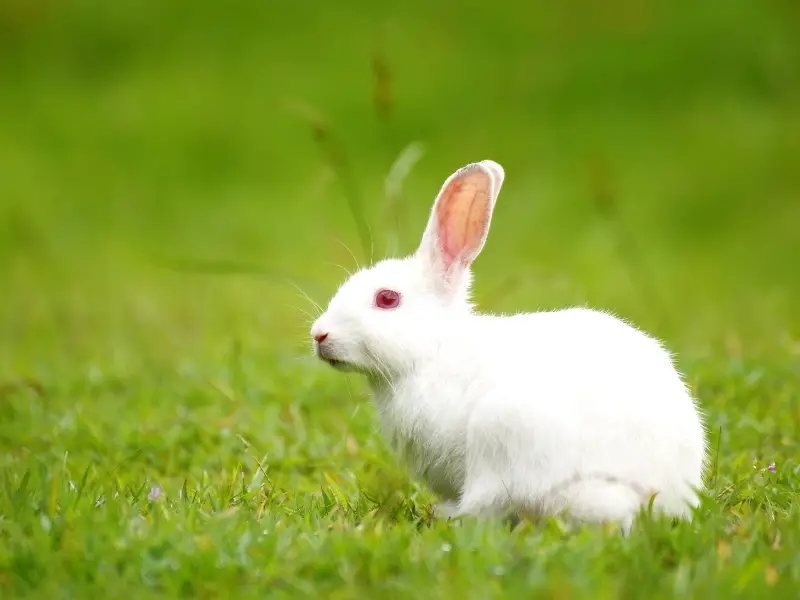Basic Appearance:
Florida whites are short and compact rabbits. Even their heads and ears are round and stocky. As their name indicates, they come in just one color: white with pink eyes.
History, Temperament, and Common Uses:
Florida whites were developed in the 1960’s by rabbit judge Orville Miliken. He wanted to create an all-purpose breed, one that would be good for family meat production, fur, and laboratory use. He named the new breed the Florida white, after his home state. Floridas are wonderful show rabbits as well. They were recognized by the ARBA in 1967, and a Florida white won Best in Show at an ARBA convention just ten years later! This was only the first of several Convention wins.
Floridas generally have an easygoing and friendly temperament, making them a good choice for beginners. As with all breeds, there are some exceptions, so research a breeder’s line before making a purchase.
Florida whites are one of the most versatile breeds of rabbit. They are excellent meat rabbits. Although weighing about 5 pounds, they have very fine bone, giving them a high dress out percentage. Their white coats also make their pelts more desirable than colored breeds. They are one of the top competitors at shows, often winning Best in Show. One of the reasons they are so competitive is coming in only one color, breeders are able to focus on type and fur only. Florida whites are also used as laboratory animals, their smaller size makes them easy keepers. Florida whites are not very popular as pets, simply because they don’t come in many exciting colors. They do have a good temperament however, and can make good pets.
Grooming, Care, and Additional Notes:
Florida whites need little grooming. A quick brushing once a week will be enough to remove loose fur. When they are molting they may need more frequent grooming.
Florida White At A Glance…
Recognized Varieties:
One variety only: pure white with pink eyes.
ARBA Body Type:
Compact
Approximate Size:
4 to 6 pounds.
Important Things to Look for When Buying Show Stock:
Short, compact, well developed body. Depth that is equal to width throughout the shoulders, ribs, loins, and hindquarters. Topline should rise in a smooth curve from the base of the ears to its highest point over the hips, than round down over full hindquarters to the base of the tail. Hindquarters that are slightly deeper and wider than the shoulders. Full, round head and stocky ears that are well furred. Flyback fur. Condition should be very firm and full.
Things to Avoid:
Narrow or flat shoulders, or shoulder too wide, narrow loin, flatness or roughness over the hips. Hips that are pinched or undercut. Rough spine. Lack of balance of depth and width. Large dewlap on does, dewlap on bucks. Fur in a molt, lack of overall condition.

